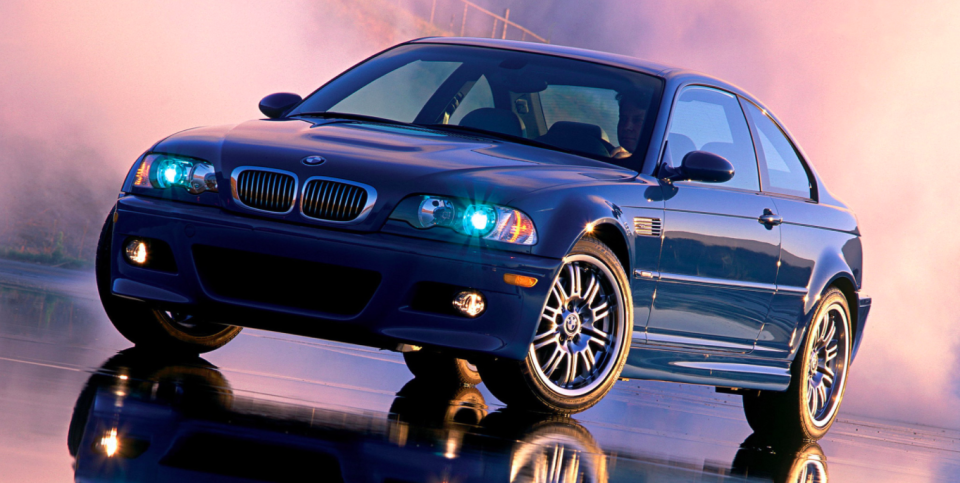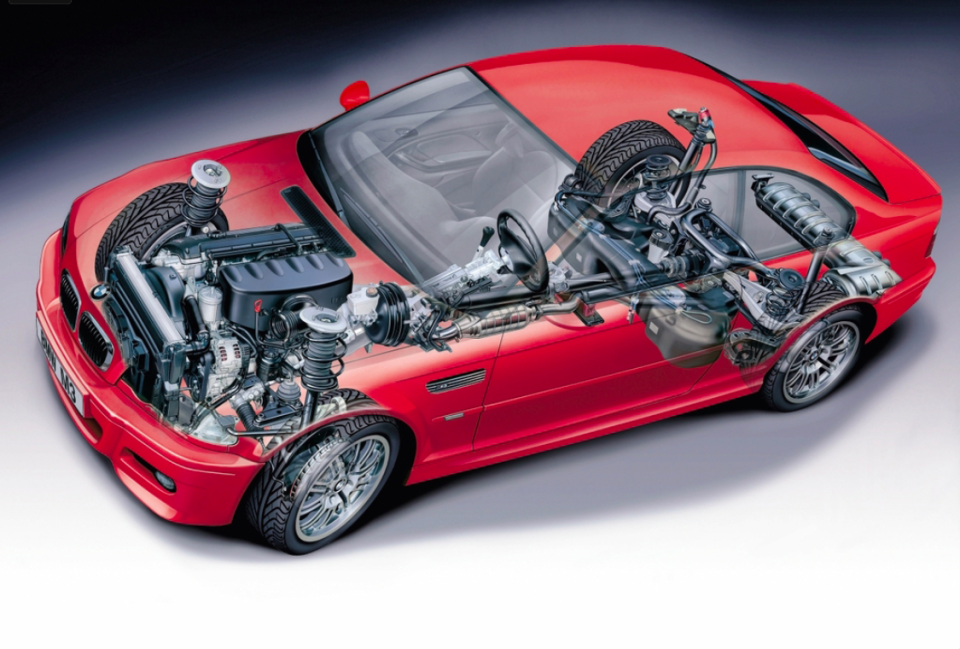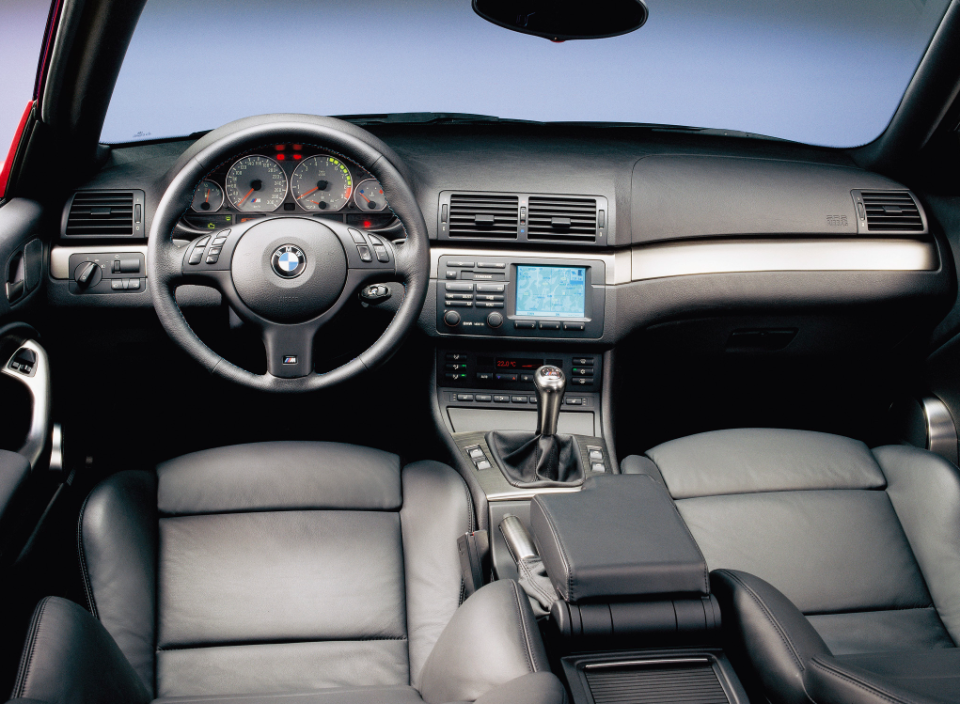Everything You Need to Know Before Buying an E46 M3

Some people consider the E46-generation BMW M3 the greatest M car ever built. Its stylish, understated looks, combined with a world-class straight-six engine and expertly tuned chassis dynamics, make it a true joy to drive. Despite the car’s rising status as a collector’s item, prices have remained reasonable over the years, meaning pretty much anyone can own one.
Thinking about picking up an E46 M3 of your own? Great choice. Here’s how to get a good one.
The Making of a Legend
The E46 M3 was first shown to the public as a concept at the 1999 Frankfurt Auto Show in Germany, before making its debut as a production vehicle at Geneva the following March. Based on the standard 3-Series, it was longer, wider, heavier, and more powerful than its predecessor, the E36. In our initial 2001 test, we were able to clock a 0-60 time of just 4.7 seconds, and a quarter-mile of 13.3 seconds at 106 mph—not bad for a car that’s now two decades old.
Under the hood sits one of BMW’s most iconic motors, the S54. An evolution of the Euro-model E36 M3’s S50B32 straight-six, it displaces 3.2 liters and made 333 horsepower and 262 lb-ft of torque when new. That’s thanks to things like an increased bore, new camshafts, a higher compression ratio, individual throttle bodies, and a VANOS (a German acronym for variable nockenwellen steuerung) solenoid attached to the front of the engine that uses oil pressure to adjust cam timing. There’s also a one-piece aluminum head casting to save weight and an oil scavenging pump to keep oil flowing during cornering. This motor can also be found in the Z4 M and later versions of the Z3 M.

Power is sent to the rear wheels via a six-speed Getrag 420G manual gearbox—the same unit found in the E39 M5. A year into production, BMW added the second iteration of its Sequential Manual Gearbox (SMG) as an option for those who preferred shifting with paddles. In the rear sits a purely mechanical clutch-type limited-slip differential.
Like most M-badged BMWs, the E46 M3 doesn’t actually look too different from a standard 3-Series of the era. Most of the changes are subtle, but easy to spot if you know what to look for. The fenders are almost one inch wider all around, with model-specific grilles found on both sides. There are bespoke side mirrors, wider kidney grilles, a quad-exit exhaust, and a raised “power dome” hood. Inside, the M3 got M-specific sport seats with side bolster adjustment, a three spoke steering wheel with M-colored stitching, an illuminated M-badged shift knob, M-specific gauge cluster, M3-badged door sills, and a handful of model-specific cloth and leather material.
Although the car didn’t change much visually during its production run, BMW continuously added new standard features and options to keep things fresh. Bi-Xenon headlights became available in late 2001, while an in-dash CD player was added as standard. Starting in early 2002, a front strut bar became standard equipment, and buyers could option things like 19-inch forged alloy wheels and brushed aluminum interior trim. LED taillights, a bluetooth phone interface, and two new colors were added in 2003, while the steering rack was revised in late 2004.

Also added in 2004 was an optional Competition package (known as ZCP), which added bigger front brake rotors, a shorter steering ratio, 19-inch alloy wheels, an Alcantara steering wheel, aluminum interior trim, and an M track mode setting that, when activated, raised the threshold at which the car’s stability control system would step in.
BMW offered the E46 M3 in just coupe and convertible body styles, despite one of the car’s main competitors of the time, the Audi RS4 Avant, coming in wagon-only form. An M3 Touring was, at one point, heavily considered for production by BMW, however. The company went as far as to have a single, complete, running prototype built. That prototype currently resides at the BMW museum. BMW’s decision not to put it into production hasn’t stopped people from building their own custom versions, of course.
So Which One Is Right for Me?
Which M3 suits you best will depend heavily on how much you want to spend, and how you plan to use it. Running, driving, E46s can range from around $7000 for clapped out, SMG-equipped convertibles to $50,000 for collector-grade, low-mileage, Competition pack-equipped manual coupes. The vast majority you’ll come across online will be priced between $15,000 and $30,000, depending on things like body style, transmission, mileage, and maintenance performed.
If you plan to do any serious driving, like track days or autocross events, we’d suggest eliminating the convertible variant from your search. Sure, it’s always more fun to drive with the top down, but removing the roof means less structural rigidity, and a compromised experience behind the wheel. Plus, many HPDE organizers won’t let convertibles without fixed roll bars to participate, and the E46 doesn’t have any. That being said, if you just want to cruise around in your M3 and don’t plan on pushing it on anything more than an occasional back road jaunt, feel free to keep the ‘vert in mind. Drop-top E46 M3 are generally $3000 to $4000 cheaper than coupes on the used market, too—something to consider if roping in costs is your goal.

 Yahoo Autos
Yahoo Autos 